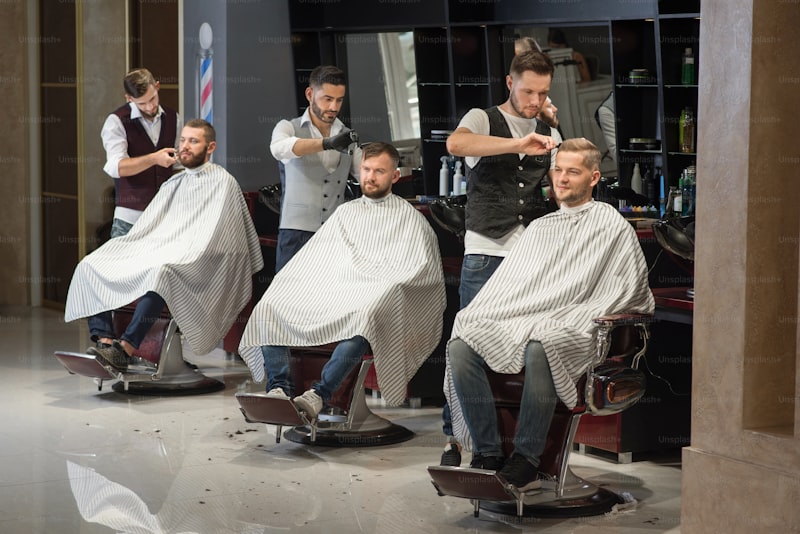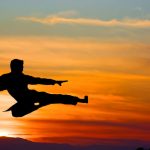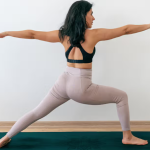Love it or hate it, Utkatasana is a wonderful pose for strengthening and stabilising the legs and core in particular. Read on for a hints and tips to enhance your own practice and develop your students.
I remember my first ever attempt at Chair Pose very clearly. It looked so easy on the DVD and I was completely baffled at how my body just wouldn’t make a shape that even remotely resembled what I was seeing. My attempt at Utkatasana really had more in common with an ironing board than a chair. But, a few years on, lots of practice and patient guidance from teachers has really changed all that. I never thought I would say it, but now I love chair pose with all of its challenge and complexity. I really enjoy the interplay of muscles that stabilise and strengthen us in the pose. Come with me on a journey through the nuances of this asana so unfairly named awkward pose at times.
See Also: 10 Reasons We Love To Hate Chair Pose
Synergists and Stability
We usually transition from Tadasana or Urdhva Hastasana into Utkatasana, bending the knees as we sweep the arms first towards the floor then on up into shoulder flexion. The full expression of the pose has a lot going on, but here is a quick romp through some of the teaching points…
-
Feet — Can be together if lateral hip length allows, or up to hips width apart for those of us who are less flexible. Grounding through all four corners of each foot gives the solid base that the pose needs.
- Knees — Flexed, ideally moving forwards over the toes as the hips settle back. Hip adductors are activated to squeeze the knees together.
- Hips — Flexed with buttocks projecting back and weight in the heels as if sitting on an imaginary chair. Gluteus Maximus is contracted and instructing students to draw back the upper, outer thighs and/or clench their buttocks helps to engage the right muscles.
- Trunk — Ideally the trunk maintains its normal curves and rises upwards from the stable pelvis and legs. Cueing length through the spine helps to prevent collapse here.
- Arms — Shoulder blades are drawn back and down towards the waist, shoulders are flexed and externally rotated to create space around the head. Hands can be held palms together if shoulder flexibility allows or the arms held parallel either side of the head. Finger tips are stretching away from the shoulders as they draw down to create dual action in the arms.
- Bandhas — Activation of mula and uddiyana bandhas encourages engagement of the adductors and core to stabilise and energise the pose.
Where the Problems May Lie
There are lots of things that mean a student achieves a version of Chair Pose that looks more like my first attempts than a David Swenson lookalike. As a yoga teacher it can be really useful to identify where the limitations are coming from so that stretches and exercises can be added to regular practice to address those length and strength issues over time:
- Lower limb strength — Many beginners lack the quadriceps and glutes strength to achieve a deep, balanced squat.
- Ankle range of movement — Range of ankle dorsiflexion varies hugely from person to person. Tight calf muscles can be one limiting factor, as can anomalies in the shape of the bones of the ankle. A deep squat requires more range than some of us have and may not change with stretching.
- Core strength — Lack of core strength contributes to a rounded and or flexed lumbar spine. The pose can become compressed here if the upper trunk folds forwards over the legs.
- Anterior fascial length — Tightness in the muscles and connective tissues on the front of the body can pull the pelvis into excessive anterior tilt and increase the lumbar lordosis; draw the trunk down towards the thighs and/or limit the range of shoulder flexion. It could also draw the shoulders and shoulder blades forwards.
- Posterior fascial length — Tightness in the posterior structures (i.e. hamstrings and glutes), can pull the pelvis into posterior tilt and reduce the lumbar lordosis leading to a rounded, hunched over look to the pose.
- Shoulders — Shoulder position is influenced by the remote fascial connections already mentioned and muscle tightness local to the joint itself. Many students will find it hard to externally rotate the shoulders and draw the scapulae together to open the chest.
Top Tips for a Deeper Chair Pose
So, with all that going on and so much to think about, how can you deepen and develop chair pose? The simple answer is to stretch what is short and strengthen was is weak but what does that mean in practice? Here are a few things to try with your students. All of these are suitable for the beginner as well as intermediate yogis:
- Down dog — Down dog lengthens posterior structures in the lower trunk and legs. It also helps to increase ankle dorsiflexion if it is limited by calf muscle length.
- Standing poses with a bent front knee — Poses like Warrior 1 and 2, Extended Side Angle and Lunges all boost the quadricep strength needed for Chair Pose. Working on these develops the strength to deepen the knee bend
- Block between the knees — Placing a block between the knees during chair pose encourages the hip adductors to work and often brings a light bulb moment when a student understands what you mean by ‘squeezing the knees together’. Well worth a try in any class to encourage this action.
- Planks — All variations of plank work on the core strength needed to hold the trunk upright.
- Crescent lunges — Low and high crescent lunges work to lengthen anterior fascial lines across the hips, trunk and upper limb. They really help to open the front of the hips, trunk and shoulders for this pose.
- Shoulder stretches — Cow face arms, dolphin, puppy stretch all work on the anterior shoulders to increase that range of flexion needed at the shoulder.
You already know that I love Utkatasana. I am positively evangelical about it in my classes and I hope you will be too if you try a few of these hints in your practice and teaching. Champion Chair Pose, I say! It really is lovely to embrace it’s challenges and feel your practice deepen. Here’s to you enjoying chair pose as much as I do.













